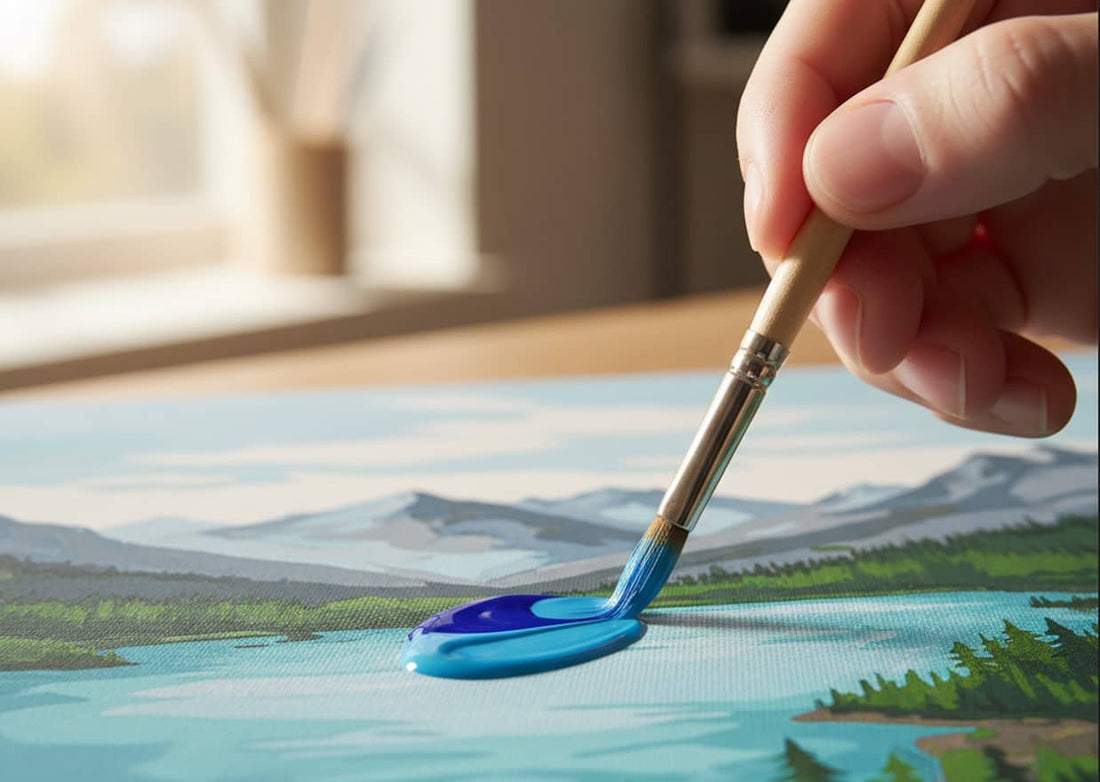
7 Pro Techniques to Make Your Paint by Numbers Look Like a Real Painting
Share
Article Summary
Take your artwork to the next level! This guide reveals 7 professional techniques used by artists to elevate a standard paint by numbers kit into a stunning piece that looks like a 'real' painting. Learn blending, texturing, detailing, and varnishing secrets for truly impressive results.
You've discovered the joy and relaxation of Paint by Numbers, meticulously filling in each section to create a beautiful image. But perhaps you're looking at your finished piece and wondering how to give it that extra touch of magic, that professional polish that truly makes it sing? You're in the right place.
While our kits provide everything for a stunning result, applying a few simple, professional techniques can transform your painting from a satisfying hobby project into a work of art you'd be proud to hang in any gallery. As experts passionate about the craft, we're sharing 7 key techniques to elevate your next masterpiece.
1. Master the Art of Blending
This is perhaps the single most impactful technique. Paint by Numbers often creates distinct blocks of colour. Blending softens these edges, creating smooth gradients perfect for skies, water, and soft backgrounds.
Technique: Wet-on-Wet Blending
- Paint two adjacent sections with their respective colours while both are still wet.
- Clean your brush and dab it lightly on a paper towel so it's slightly damp, not wet.
- Gently use the tip of your damp brush to feather the line where the two colours meet, pulling them softly into each other until the hard edge disappears.

2. Add Texture with Stippling
Want to make stone walls look rougher, leaves look bushier, or sand look granular? Stippling is your secret weapon. It involves dabbing paint rather than stroking.
Technique: Gentle Dabbing
- Dip the very tip of a dry brush into your paint.
- Wipe off most of the excess paint.
- Gently dab the brush tip onto the canvas in the desired area, creating small, irregular dots. Build up layers slowly for more intense texture. (Perfect for kits like our Secret Door!)

3. Create Depth with Subtle Shadowing
Adding subtle shadows can make objects look more three-dimensional. Mix a tiny amount of black or a darker complementary colour into your base colour.
Technique: Targeted Darkening
Identify where shadows would naturally fall (e.g., under a chin, beneath leaves, the far side of a tree trunk). Apply your slightly darkened shade sparingly in these areas, blending the edge softly into the main colour.
4. Enhance Highlights for Sparkle
The opposite of shadowing, adding tiny, bright highlights makes things pop.
Technique: Precise Bright Spots
Use the very tip of your smallest brush (or even a toothpick!) dipped in pure white or a very pale version of the base colour. Add tiny dots or thin lines where light would hit directly – the glint in an eye, the crest of a wave, the edge of a petal.
5. Go Over the Lines (Carefully!)
Sometimes, the printed lines can be slightly visible, especially with lighter colours. Once your paint is dry, you can carefully go back over these lines with the adjacent colour to hide them completely, creating a more seamless look.
6. Apply a Finishing Varnish
This is the ultimate professional touch. A clear acrylic varnish (available in gloss or matte) does two crucial things:
- Protects Your Art: Seals the paint from dust, UV light, and minor scratches.
- Evens the Sheen: Acrylic paints can dry with slightly different finishes. Varnish creates a uniform look across the entire canvas, making it look cohesive and intentional.
Ensure your painting is completely dry (wait at least 48 hours), then apply a thin, even coat with a wide, soft brush.
7. Frame It Like a Pro
The final step is presentation. A well-framed painting instantly looks more valuable and complete. Our DIY Wooden Frame Kits provide an easy way to achieve a professional gallery-wrap finish, making your artwork ready to hang and admire.
For detailed instructions, see our dedicated guide: How to Frame Your Paint by Numbers The Easy Way.

About the Author
William Murdock, founder of Paint on Numbers UK, believes that the true joy of painting lies not just in the process, but in achieving a result you're truly proud of. He's dedicated to sharing techniques that empower everyone to create stunning art.
Ready to Elevate Your Next Painting?
Armed with these pro techniques, you're ready to tackle any project. Find your next challenge in our collections, perhaps starting with a kit from our Expert-Level Kits?
Explore All KitsFor a full overview of the basics, don't forget our Ultimate Guide to Paint by Numbers.
